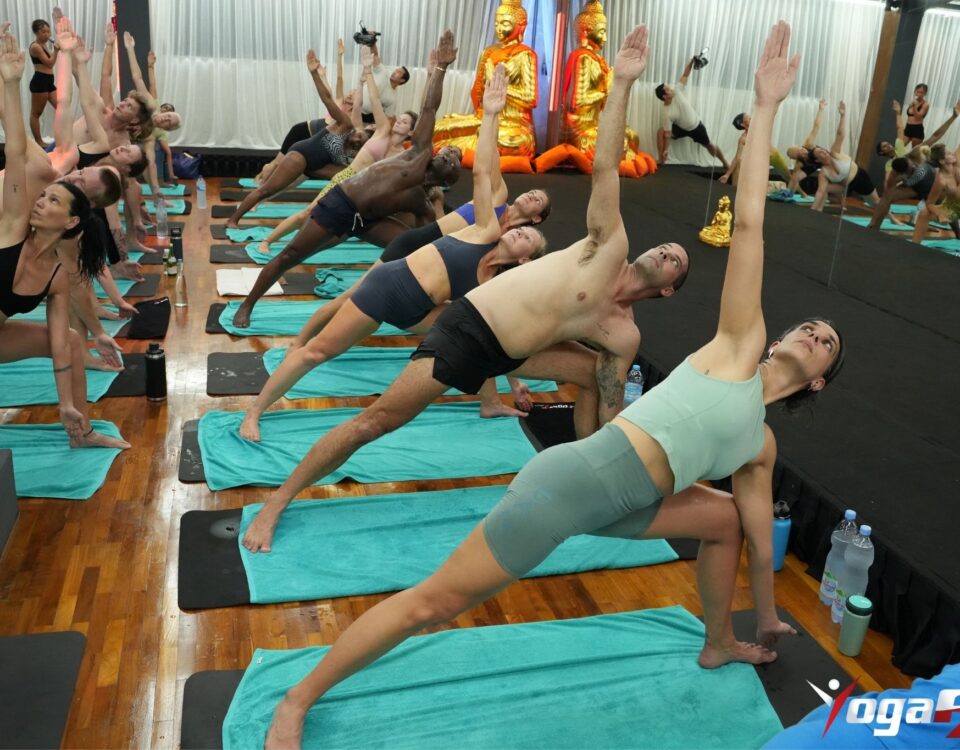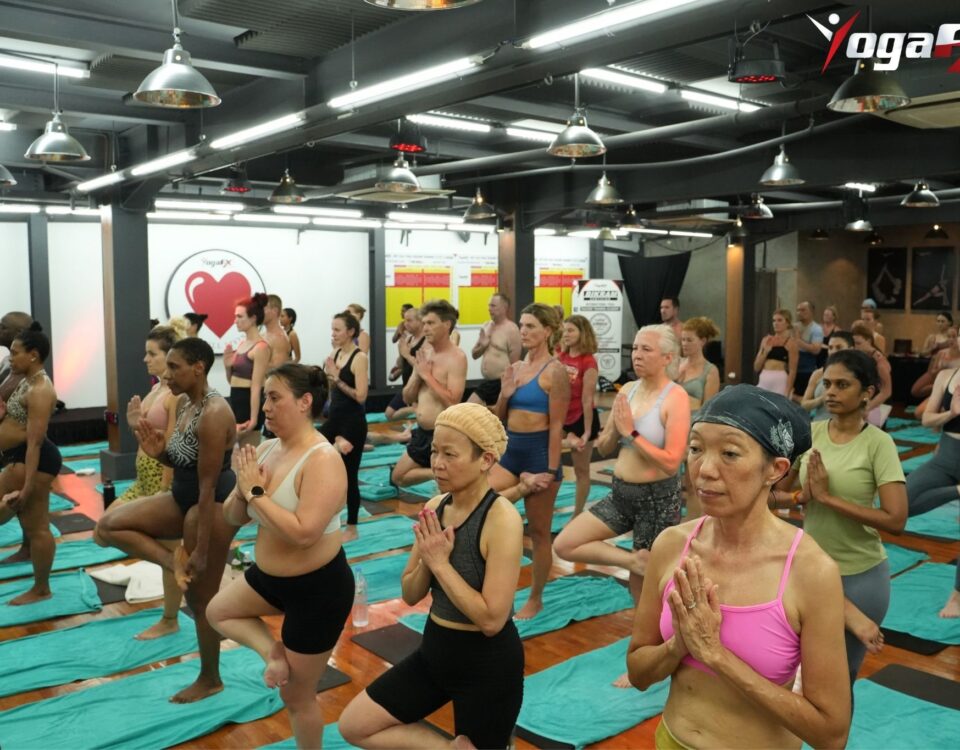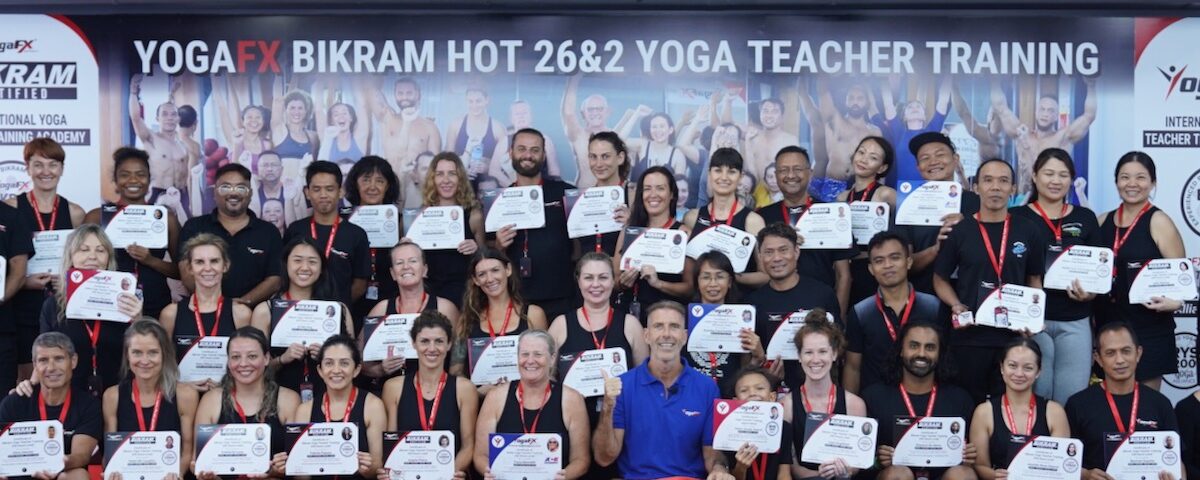
Yoga certification is more than just a qualification; it’s a personal journey of growth and empowerment.
Becoming a certified yoga instructor opens doors to new opportunities, both for your own practice and for teaching others
Whether you’re an experienced yogi or someone passionate about sharing yoga’s benefits, getting certified is a crucial step.
But it’s not just about having a certificate—it’s about deepening your knowledge, refining your practice, and building the confidence to guide others on their wellness journey.
In this guide, we’ll explore everything you need to know about yoga certification, the different types available, and why making the right choice in your certification journey is essential.
About Yoga Certification
A yoga certification is a symbol of your dedication, skill, and ability to teach yoga.
Certification programs are designed to give you a strong understanding of yoga’s principles, techniques, and teaching methods.
These programs cover various aspects like anatomy, physiology, philosophy, and ethics, ensuring that you’re well-prepared to teach safely and effectively.
When you choose to pursue yoga certification, you’re investing in yourself and your future as a yoga teacher.
This certification not only validates your skills but also opens up teaching opportunities around the world.
It also gives your students confidence in your ability to guide them.
Types of Yoga Certification
Yoga certifications come in different levels and styles, depending on what you want to teach and how advanced you want to become.
Here are some common types:
200-Hour Yoga Teacher Training (YTT)
The 200-hour Yoga Teacher Training is the most widely recognized and foundational certification for aspiring yoga instructors.
This program is designed to give you a comprehensive introduction to the art and science of yoga, covering essential aspects such as yoga postures (asanas), breathing techniques (pranayama), meditation, and basic yoga philosophy.
In a 200-hour YTT, you’ll delve into the history and principles of yoga, learning about the origins of different yoga styles and their significance in modern practice.
You’ll also study human anatomy and physiology, focusing on how yoga postures affect the body and how to practice and teach them safely.
This training emphasizes teaching methodologies, helping you develop the skills to lead a class confidently and effectively, including how to sequence poses, give instructions, and offer modifications for different skill levels.
For many, the 200-hour YTT is the first step in their teaching journey. It’s an opportunity to deepen your personal practice while gaining the knowledge and tools needed to share yoga with others.
Whether you plan to teach full-time, part-time, or simply want to enhance your understanding of yoga, this certification provides a solid foundation on which to build your teaching career.
300-Hour Yoga Teacher Training
The 300-hour Yoga Teacher Training is designed for those who have already completed a 200-hour certification and wish to advance their practice and teaching skills.
This training takes you deeper into the study of yoga, offering more detailed and nuanced insights into the practice.
In a 300-hour YTT, you’ll explore advanced yoga postures, learning how to teach them safely and effectively to students at different levels.
The training often includes more complex sequences, adjustments, and assists, allowing you to guide students through challenging poses with confidence.
Additionally, you’ll study therapeutic yoga practices, which focus on using yoga as a tool for healing and addressing specific physical or mental health conditions.
Beyond the physical practice, the 300-hour YTT dives deeper into yoga philosophy and the subtle aspects of yoga, such as energy systems (chakras), meditation techniques, and the spiritual dimensions of yoga.
You’ll also gain a better understanding of how to integrate these elements into your teaching, helping students connect with yoga on a deeper level.
This advanced training is ideal for those who are serious about their teaching career and want to stand out in the yoga community.
It equips you with the knowledge and skills to offer specialized classes, workshops, and even teacher training programs of your own.
500-Hour Yoga Teacher Training
The 500-hour Yoga Teacher Training is the most comprehensive certification, combining the knowledge and skills from both the 200-hour and 300-hour trainings. This program is designed for those who want to master their practice and teaching abilities, offering a deep and thorough education in all aspects of yoga.
A 500-hour YTT covers everything from the basics to advanced techniques, ensuring that you have a well-rounded understanding of yoga. The curriculum typically includes in-depth studies of advanced anatomy, where you learn about the body’s intricate systems and how yoga can support physical health.
You’ll also explore advanced yoga philosophy, learning about ancient texts like the Yoga Sutras and the Bhagavad Gita, and how these teachings can be applied to modern life.
In addition to mastering asanas and pranayama, you’ll study advanced meditation practices, energy work, and the art of teaching. This training often includes practical experience, where you’ll have the opportunity to teach classes, receive feedback, and refine your teaching style.
The 500-hour certification is ideal for those who are committed to a long-term career in yoga. It positions you as an expert in the field, capable of teaching a wide range of students, developing specialized programs, and contributing to the growth of the yoga community.
Specialty Certifications
Specialty certifications allow you to focus on specific areas of yoga, enabling you to tailor your teaching to meet the needs of different populations or interests. These certifications are ideal for teachers who want to expand their expertise and offer more specialized classes.
- Prenatal Yoga: This certification focuses on teaching yoga to pregnant women, helping them maintain physical and mental well-being throughout their pregnancy. You’ll learn how to modify poses for each trimester, offer safe and supportive sequences, and address common pregnancy-related issues such as back pain and stress.
- Children’s Yoga: Teaching yoga to children requires a different approach than teaching adults. This certification covers age-appropriate poses, playful sequences, and techniques for keeping children engaged and focused. It also addresses the developmental benefits of yoga for children, such as improved concentration, flexibility, and emotional balance.
- Yoga Therapy: Yoga therapy focuses on using yoga to support physical and mental health. This certification equips you with the knowledge to work with individuals who have specific health conditions, such as chronic pain, anxiety, or cardiovascular issues. You’ll learn how to design personalized yoga programs that address these conditions and promote overall wellness.
- Hot Yoga: This certification focuses on teaching yoga in a heated environment, such as Bikram or Vinyasa-style classes. You’ll learn about the benefits and challenges of practicing in heat, how to safely guide students through hot yoga sequences, and how to manage the unique aspects of a hot yoga studio.
Specialty certifications not only enhance your skills but also make you more versatile and marketable as a yoga teacher. They allow you to reach new student populations and offer classes that cater to specific needs and interests.
Continuing Education (CE)
Continuing education is an ongoing process that helps you stay current with the latest trends, techniques, and research in the yoga world. Even after becoming certified, it’s important to continue learning and growing as a teacher. Continuing education courses can take many forms, including workshops, online courses, advanced training, and retreats.
These courses allow you to explore new areas of interest, refine your teaching skills, and stay updated on changes in the yoga industry.
For example, you might take a course on trauma-informed yoga, which teaches you how to create a safe and supportive environment for students who have experienced trauma.
Or you might attend a workshop on the latest research in yoga and anatomy, helping you deepen your understanding of how yoga affects the body.
Continuing education is also important for maintaining your certification, especially if you’re registered with a professional organization.
It shows your commitment to professional development and ensures that you continue to offer high-quality instruction to your students.
By engaging in continuing education, you not only enhance your own practice and teaching but also contribute to the ongoing evolution of yoga as a dynamic and ever-growing field.
Yoga Certification Organizations
When selecting a yoga certification organization, it’s important to understand the differences between the various options available. Here’s a comparison of five well-known yoga certification organizations.
Yoga Alliance
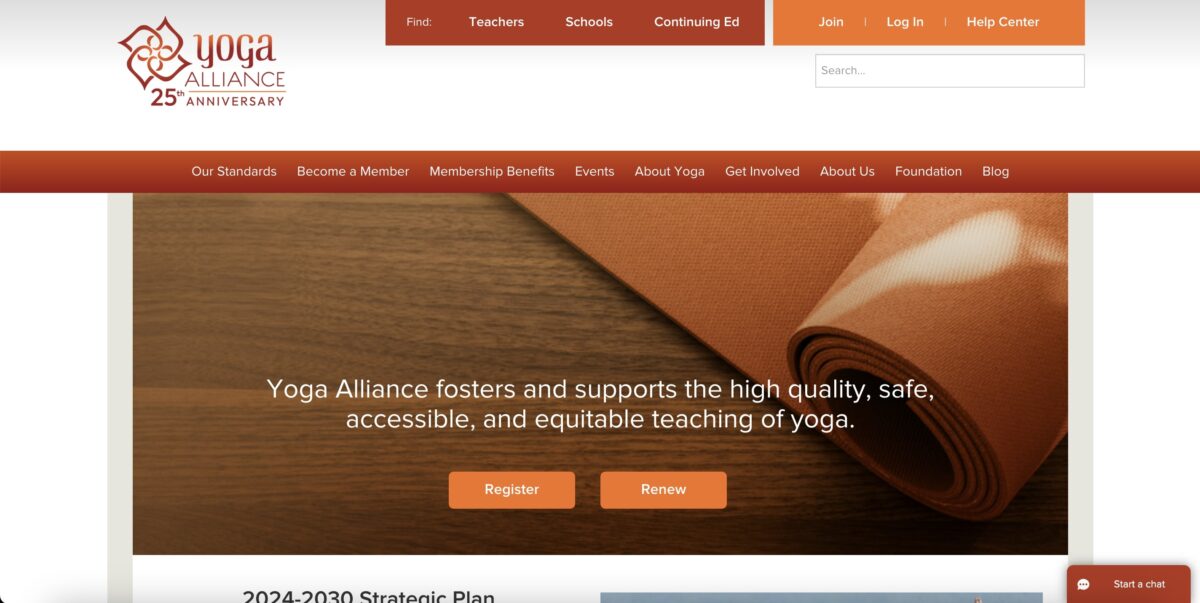
Established: 1999
Scope: Global
Community Size: Over 7,000 registered yoga studios and schools, with over 80.000 of registered yoga teachers (RYTs).
Key Features: Yoga Alliance is recognized as the gold standard in yoga certification. It has the largest community of yoga professionals, offering a comprehensive registry that connects certified teachers with studios and schools around the world. Yoga Alliance sets rigorous standards for teacher training programs, ensuring quality education and safety in the practice of yoga. Their global influence and extensive network provide unparalleled opportunities for professional development, community support, and recognition.
Why It Stands Out: Yoga Alliance’s global reach, established reputation, and commitment to maintaining high standards make it the top choice for yoga professionals seeking international recognition and a strong support network.
International Association of Yoga (IAY)
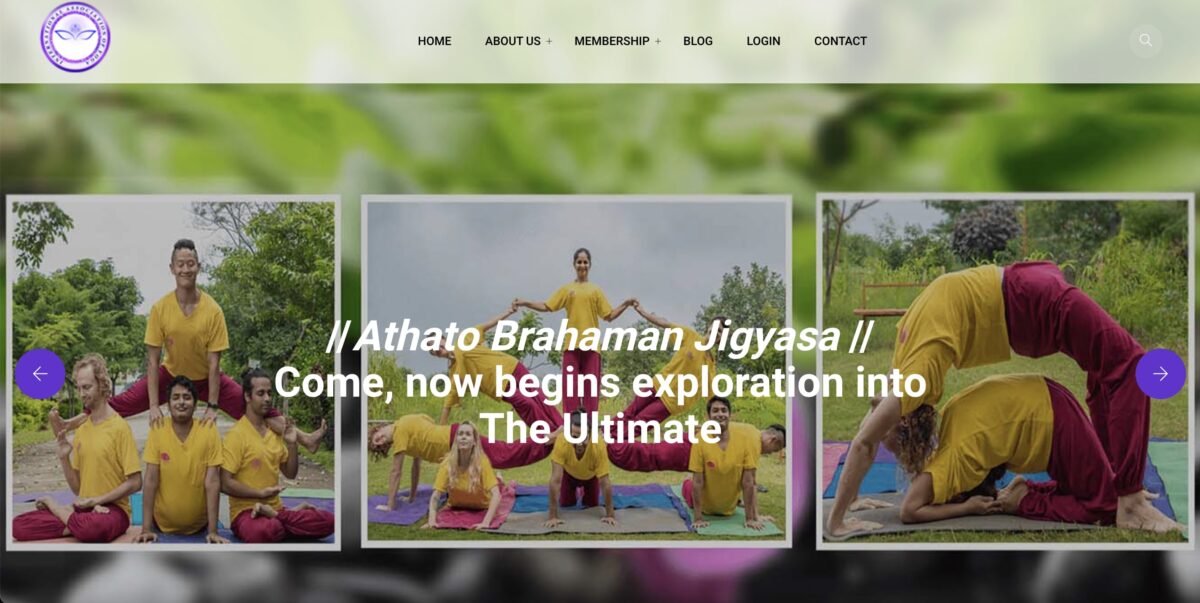
Established: N/A
Scope: Global, with a focus on traditional yoga practices.
Community Size: Smaller compared to Yoga Alliance.
Key Features: The International Association of Yoga (IAY) emphasizes traditional yoga teachings and professional development. While it offers certification and a supportive community, its influence is more niche and less widespread than Yoga Alliance. IAY is a good choice for those particularly interested in traditional and classical forms of yoga.
Why It’s Different: IAY focuses more on traditional practices and less on creating a large global community. It is suitable for those looking for a more focused approach to yoga certification.
World Yoga Association (WYA)
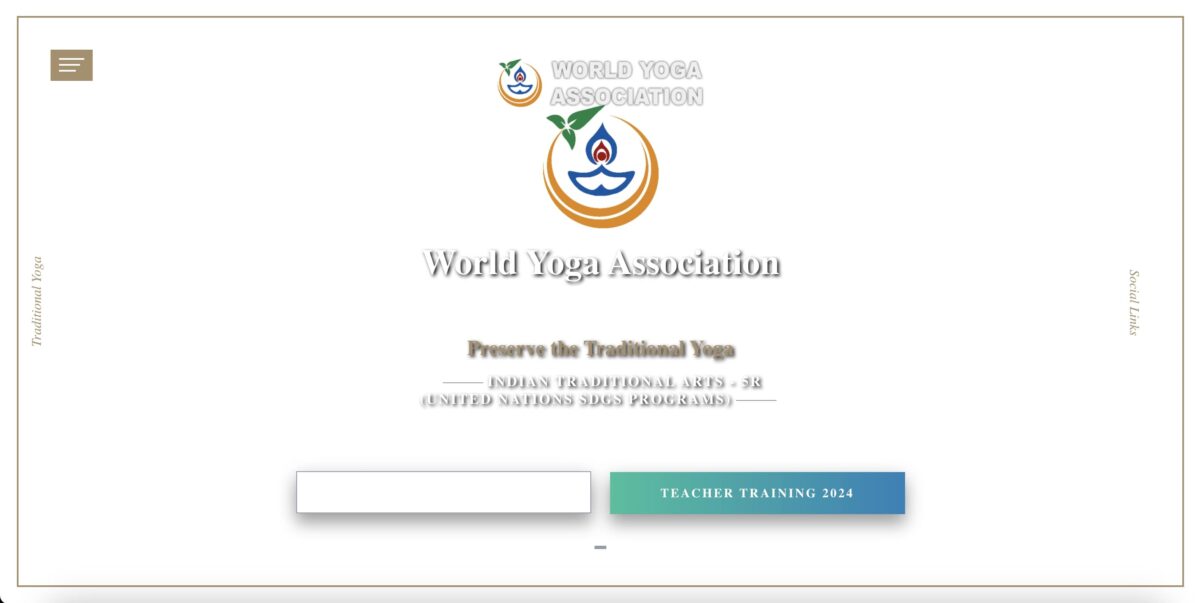
Established: 2011
Scope: International, with a focus on education and teacher training.
Community Size: Medium, with recognition in various countries.
Key Features: World Yoga Alliance (WYA) promotes yoga education and teacher training globally, with an emphasis on holistic wellness and traditional yoga teachings. It provides certification recognized in several countries, though its community and reach are not as extensive as Yoga Alliance.
Why It’s Different: WYA offers a balanced approach to traditional and modern yoga education but lacks the broad recognition and extensive network that Yoga Alliance provides.
Yoga Alliance Professionals
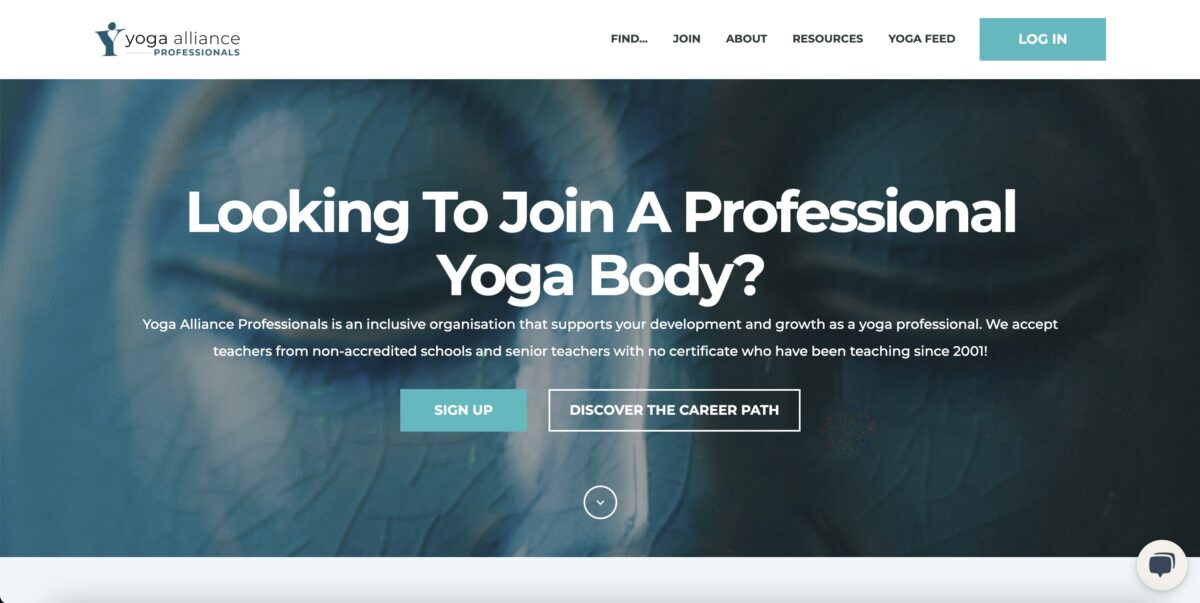
Established: 2006 (formerly known as Yoga Alliance UK)
Scope: Primarily UK and Europe
Community Size: Significant in the UK and Europe, but smaller globally.
Key Features: Yoga Alliance Professionals is a respected organization in the UK, certifying yoga teachers and schools with a focus on maintaining high standards of yoga education. It offers resources and support primarily within Europe, making it a strong choice for those planning to teach in this region.
Why It’s Different: While it’s a leading organization in Europe, Yoga Alliance Professionals is more regionally focused, lacking the global influence and community size of Yoga Alliance.
Yoga Alliance International (YAI)

Established: 2006
Scope: Global, with a strong presence in Asia and Europe.
Community Size: Growing, but not as extensive as Yoga Alliance.
Key Features: Yoga Alliance International (YAI) provides a registry for yoga teachers and schools, promoting yoga education across various regions, particularly in Asia and Europe. It offers a range of certification options and emphasizes the global spread of yoga.
Why It’s Different: YAI has a significant presence in certain regions but does not have the same level of global recognition or community engagement as Yoga Alliance. It is ideal for those seeking certification with a focus on the Asian and European markets.
While each of these organizations offers unique benefits and caters to different needs, Yoga Alliance remains the top choice for aspiring yoga teachers who seek global recognition and a strong professional network. Since its establishment in 1999, Yoga Alliance has set the standard for yoga certification, providing a comprehensive support system, a vast global community, and the assurance that your credentials will be recognized and respected worldwide.
If you aim to teach yoga internationally and be part of a large, supportive community, choosing Yoga Alliance as your certification body is the best decision you can make for your yoga career.
Tips for Taking Yoga Certification
Starting the journey to become a certified yoga teacher is exciting but can also be challenging. It’s important to plan carefully to make sure you choose the right path. Whether you’re just beginning or looking to deepen your practice, these tips will help you make the most of your yoga teacher training experience. From choosing the right program to thriving during your training, these insights will guide you toward becoming a confident and effective yoga instructor.
Research and Choose the Right Program
Not all yoga teacher training programs are the same. It’s important to research before deciding. Look for programs that match your goals, whether you’re interested in a specific style of yoga or want a broader education. Pay attention to the curriculum, the instructors’ qualifications, and the school’s reputation. Make sure the program is accredited by a well-known organization like Yoga Alliance so your certification will be recognized.
Consider Your Yoga Style
Choose a certification program that matches the style of yoga you love. Whether it’s Vinyasa, Hatha, Ashtanga, or Bikram, training in a style you’re passionate about will make learning more enjoyable. There are specialized programs for different types of yoga, so pick one that suits your interests and teaching goals.
Check the Trainers’ Qualifications
The quality of your training depends a lot on the instructors. Make sure your trainers are experienced and have strong backgrounds in the yoga style you’re interested in. They should also be certified by a recognized organization like Yoga Alliance. Experienced trainers can provide valuable insights and greatly improve your learning experience.
Understand the Commitment Required
Yoga teacher training requires a lot of time and energy. Be prepared for an intensive learning experience that includes daily practice, study, and self-reflection. Whether you choose a short, immersive program or a part-time course over several months, make sure you can fully commit to it.
Establish a Regular Practice
Before starting your certification, it’s important to have a regular yoga practice. This will help you build the physical and mental discipline needed for the training and give you a deeper connection to yoga. Regular practice will make the training smoother and help you prepare for the challenges ahead.
Stay Open to Learning
Yoga teacher training is not just about learning physical postures; it’s also about personal growth. Approach your training with an open mind, ready to learn new ideas, techniques, and philosophies. Be willing to challenge your beliefs and embrace all aspects of yoga, beyond just the physical practice.
Build a Supportive Community
One of the best parts of yoga teacher training is the connections you’ll make with other students. Building relationships with your peers can create a support system that helps you during and after your training. These connections can lead to collaboration, friendships, and a sense of belonging in the yoga community.
Take Care of Yourself
Yoga teacher training can be physically and emotionally challenging. It’s important to take care of yourself during the process. Make sure you get enough rest, eat well, and take time to relax. Practicing self-care will help you keep your energy up and stay focused during your training.
Plan for After Certification
Think about how you’ll use your certification once you’ve completed your training. Whether you want to teach full-time, part-time, or just deepen your practice, it’s helpful to have clear goals. Consider where you want to teach, the types of classes you want to lead, and how you’ll continue growing as a teacher after certification.
Keep Learning
Your journey as a yoga teacher doesn’t end with certification. Continuing education is important to stay up-to-date with new developments in yoga and to improve your teaching skills. Look for workshops, advanced training, and retreats that can help you grow as a teacher and keep your practice fresh and inspiring.
Conclusion
Getting a yoga certification is a life-changing experience that empowers you to share yoga with others. It’s an investment in yourself, giving you the skills, knowledge, and confidence to teach yoga effectively. Whether you’re just beginning your journey or looking to deepen your expertise, choosing the right certification program is key.
At YogaFX, we offer yoga teacher training programs accredited by Yoga Alliance, ensuring you receive high-quality education and a globally recognized certification. Our training is designed to enhance your teaching skills and deepen your understanding of yoga. Join us on this transformative journey and take the next step towards becoming a confident, certified yoga instructor.
Remember, with more than 7,000 yoga studios worldwide registered with Yoga Alliance, being part of this community opens doors for you to teach anywhere in the world. Choose wisely, and let your growth and teaching journey begin.
